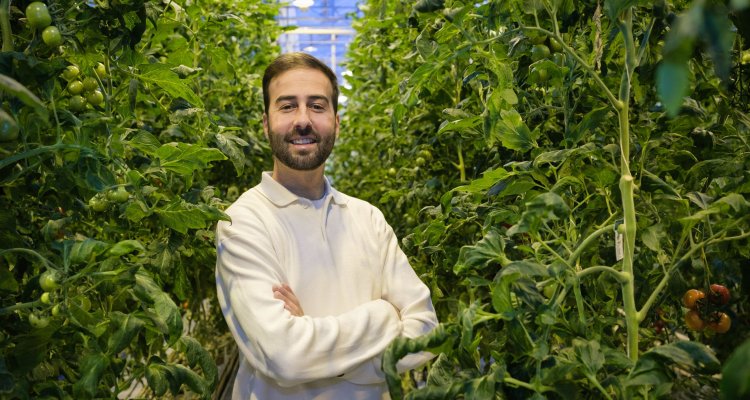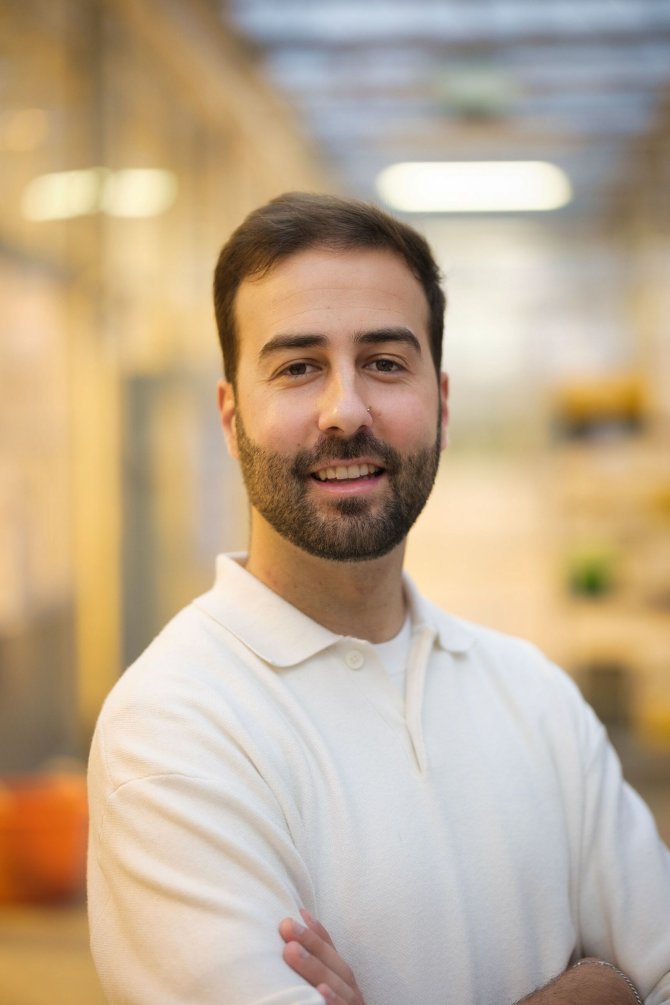
Interview
Zooming in on microbiomes: meet the tiny predators that are vital for ecosystems
Microbes in the soil are constantly on the move, hunting, feeding, and releasing nutrients to plants. PhD student Alejandro Berlinches de Gea studies these tiny organisms under the microscope. At the Dies Natalis on 8 March, he will explain what makes soil microbiomes so fascinating, and how important they are to the ecosystem.
Zooming in on microbiomes
Bacteria, moulds and other micro-organisms aren’t on their own. All over the world, these tiniest of creatures form communities. In plants, animals and in the soil: from globe to gut. To celebrate WUR’s Dies Natalis, we join three young scientists and zoom in.
This is the third story in this series. Read the previous stories on the intestinal bacteria of babies, and on bacterial genes
‘When you look at soil under a microscope, the things you see there are amazing. It’s like entering another world, inhabited by aliens. There are thousands of things there. I didn’t even recognize most of them when I started my PhD. I kept sending pictures to my supervisor, asking him what I was looking at.’
Tiny hunters
Alejandro Berlinches de Gea studies protists and nematodes. These tiny organisms are underground predators, feeding on bacteria, fungi and pathogens in soils. Berlinches de Gea is amazed by what he sees under the microscope: ‘Protists are super cool. Some of them go after nematodes, hunting in packs, just like lions. Certain protists are even able to capture a prey and use their shell as a shield!’
- Unfortunately, your cookie settings do not allow videos to be displayed. - check your settings
Like many biologists, Berlinches de Gea was initially interested in the big animals that often appear in nature documentaries. But his attention gradually shifted towards soils and microbes. ‘Many scientists already study sharks and lions, but I really like being part of a group that’s doing something rare. On top of that, our research is also very challenging, and very important.’ After all, the soil is a hotspot of biodiversity: some studies suggest that 60% of the world’s biodiversity is in the soil. Protists play a vital role below ground by releasing nutrients that can be taken up by plants, feeding on pathogens, and more.
Helping plants
Berlinches de Gea conducted experiments in the Unifarm greenhouses on Wageningen Campus, adding different levels of microbial diversity to plants. In one of these experiments, he added varying quantities of protists and nematodes as well as fertiliser to the soil, to see how the plants would react. ‘My research results suggest that we can accelerate plant growth by adding microbial predators, rather than using more and more fertiliser. Decreasing the use of fertiliser in agriculture is an important challenge, so this might be a promising outcome. We know that several companies are already considering the use of protists.’
Through his research, Berlinches de Gea is hoping to make a positive impact on soil biodiversity. ‘Since I started studying biology, I have been driven by a love of nature. Normally we protect species that are cool, beautiful and well-known. But how do you convince people to protect organisms that they can’t even see? That is why I’m very happy to be a part of the Dies, where I can share my stories with a large audience.’
Alejandro Berlinches de Gea (29)

Alejandro Berlinches de Gea is a PhD candidate at the Laboratory of Nematology.
Approximately 60% of biodiversity on Earth is in soils. Microbial predators in the soil, such as protists and nematodes, are vital for ecosystems